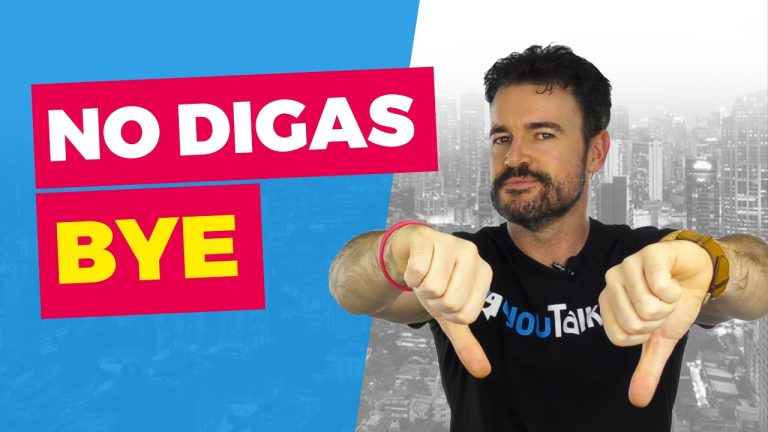
Decir adiós en inglés puede ser más complicado de lo que parece. Afortunadamente, estamos aquí para ayudarte a dominar la traducción de esta palabra común. En este artículo, te guiaremos a través de las diferentes formas de decir adiós en inglés y te proporcionaremos consejos útiles para que puedas despedirte con confianza en cualquier situación. ¡No te pierdas esta guía completa para dominar la traducción de adiós en inglés!
¿Cuál es la traducción al inglés de adiós?
En inglés, existen varias formas de despedirse. Además de “Goodbye,” también se puede decir “farewell,” “see you later,” “take care,” o simplemente “bye.” Todas estas expresiones son igualmente válidas para decir adiós en inglés, dependiendo del contexto y la formalidad de la situación.
¿Cuántas formas de decir adiós en inglés?
There are several ways to say goodbye in English. You can use “Goodbye” or “Bye” to say “Adiós” in Spanish. Additionally, “See you later” translates to “Hasta luego” or “Nos vemos,” and “See you” or “See ya” also means “Nos vemos” in Spanish.
¿Cuál es la forma amable de despedirse en inglés?
Al despedirse amablemente en inglés, es común utilizar frases como “Goodbye” o “Take care”. También se pueden emplear expresiones más informales como “See you later” o “Have a good day”. Es importante recordar que el tono de voz y el lenguaje corporal también juegan un papel importante en transmitir una despedida amable y cordial.
Saying Goodbye: Mastering the Art of Translation
Are you ready to say goodbye to language barriers and become a master of translation? Whether you’re a professional translator or just someone who loves learning new languages, mastering the art of translation can open up a world of opportunities. With the right skills and techniques, you can effortlessly convey the nuances and subtleties of a language, making your translations accurate and impactful.
In the world of translation, precision is key. Saying goodbye to language barriers means being able to capture the true essence of a message and convey it seamlessly in another language. By mastering the art of translation, you can ensure that nothing gets lost in translation, and that your words resonate with the same power and emotion in any language.
So, if you’re ready to take your language skills to the next level and become a master of translation, it’s time to say goodbye to language barriers for good. With the right tools and techniques, you can confidently navigate the complexities of language and become a skilled translator who can bridge the gap between different cultures and communities. Embrace the art of translation and open up a world of possibilities.
Optimizing Your Translation of ‘Adiós’ into English
Are you struggling to find the perfect translation for the Spanish word ‘adiós’ into English? Look no further! By carefully considering the context and tone of the original message, you can optimize your translation to convey the appropriate meaning in English. Whether you choose to use ‘goodbye’, ‘farewell’, or ‘see you later’, it is important to capture the sentiment of the original word while maintaining clarity and coherence in the translation.
When translating ‘adiós’ into English, it is essential to take into account the nuances of the Spanish language and the cultural connotations of the word. By carefully selecting the most suitable English equivalent, you can optimize the translation to effectively communicate the intended message. Whether you are bidding a formal farewell or expressing a heartfelt goodbye, finding the right translation for ‘adiós’ is crucial for effectively conveying the emotions and sentiments behind the word.
In conclusion, the phrase adios en ingles traducir translates to goodbye in English in Spanish. Whether you’re learning a new language or simply looking to improve your vocabulary, mastering common phrases like this can greatly enhance your communication skills. So, next time you bid someone farewell in Spanish, feel confident in saying adios and knowing that you’re speaking in their native tongue. Keep practicing and soon enough, you’ll be conversing fluently with native speakers. ¡Hasta luego!
